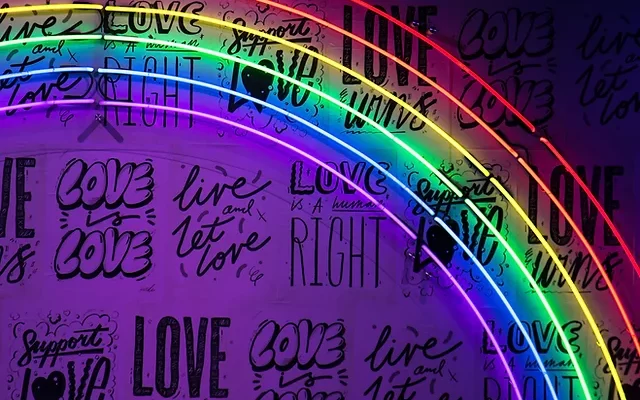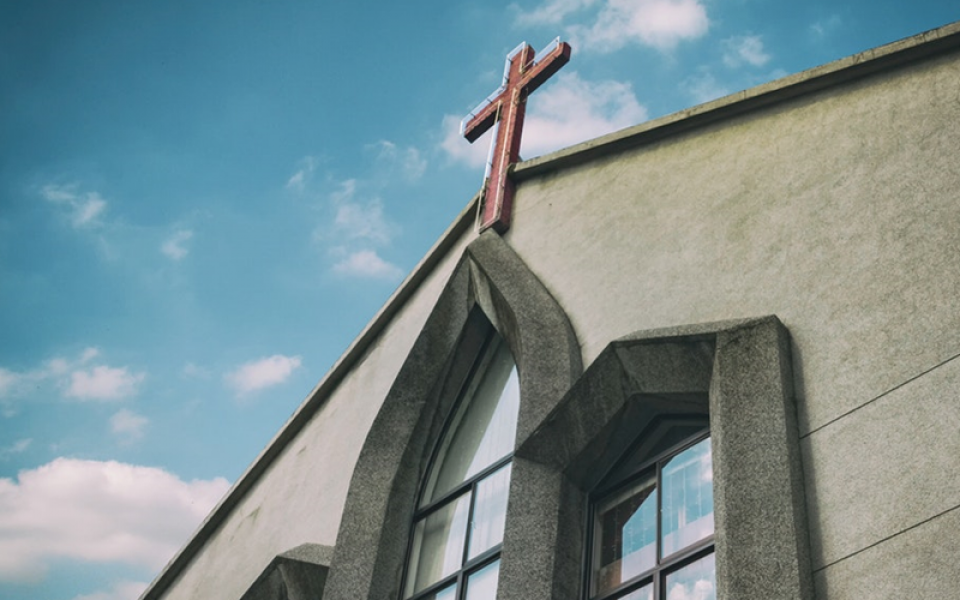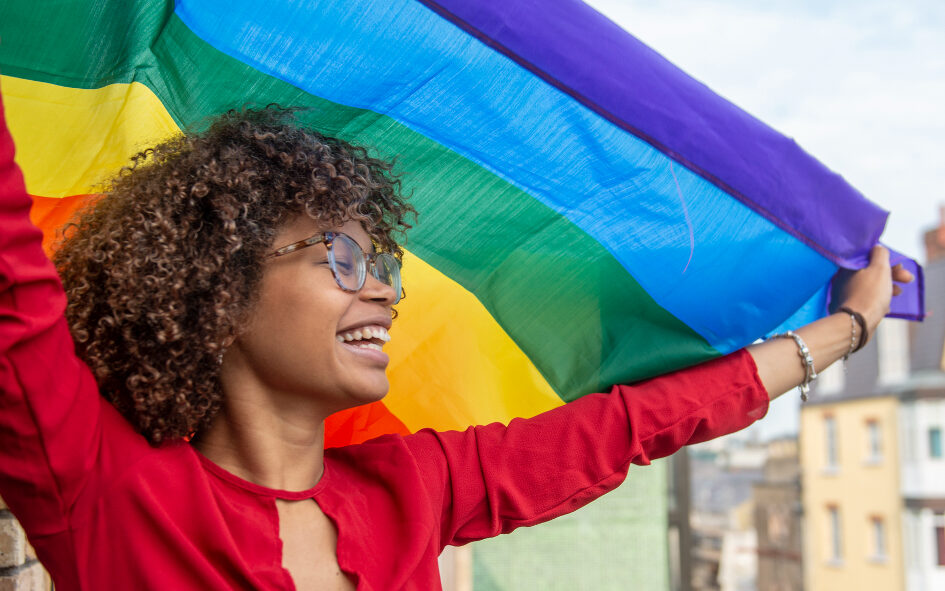
Tattoo Sleeve Collection: I was always told that the perfect Christian didn’t defile their body, because they belonged to God and were made in their image. While deconstructing my faith, I quickly realized that tattoos weren’t inherently immoral. For me, tattooing represented a transition away from an ascribed Christian identity towards regaining agency over my own decisions.
Growing up in the church, I faced religious trauma in troves. I struggled under the cognitive dissonance of believing in a homogeneously accepting and loving God and being told that there is a checklist of attributes necessary to earn the title of a “good” Christian. I was to wear my pink dresses to Sunday school, draw on coloring sheets filled with images of European Jesus, and sing that there’s nothing my God cannot do on the ladybug rug in the corner of the Sunday school classroom. My dissonance only became stronger in middle school as I began to question if I was truly straight, just as my youth pastor introduced the topic of sexual morality. Apparently, there was nothing my God could not do, except love my queerness.

Religious Trauma Among Lgbtq+ Christians
Lgbtq+ Christians face a disproportionate amount of religious trauma, as they are often exposed to homophobic rhetoric within Christian churches (Jones 2022). Religious trauma is defined as the long term harm caused by religious institutions to an individual through harmful messaging and devastation of one’s self-worth (Jones 2022). Queer church-goers are oftentimes told that a core element of their identities–their sexuality–is inherently wrong in the eyes of their deity.
Religious trauma is defined as the long term harm caused by religious institutions to an individual through harmful messaging and devastation of one’s self-worth.
(Jones 2022)
Psychotherapist and Professor Brooke Petersen states that religious trauma falls under the category of insidious trauma, a gradual escalation of psychological damage through sustained, low-grade exposure to harmful conditions, similar to the trauma of sexism and racism. It leads those who suffer from it to form a deep distrust of the world around them and perceive their emotional safety to be constantly in jeopardy. (Petersen 2022, 16). The psychosocial distress caused by growing up Christian and queer can account for “the different rates in depression, hopelessness, and current suicidality seen between gay, lesbian, and bisexual adolescents and their heterosexual peers” (Adelson 2012, ). Religious trauma can be inflicted through conversion therapy and cultural rejection in the most extreme of cases.
[Religious trauma] leads those who suffer from it to form a deep distrust of the world around them and perceive their emotional safety to be constantly in jeopardy.
(Petersen 2022, 16)

Generational Clash and the Changing DSM
Queer people often struggle to find acceptance in Christian churches because of the generational differences between themselves and other congregants. The National Congregations Study found that Christian churches are likely to have much older congregants than other religious backgrounds, with older congregations especially concentrated in Catholic, Mainline and Protestant denominations (Latzel; 2017, 86). The leadership of churches is also shifting; the percentage of churchgoers with a lead pastor younger than 50 declined from 48% to 35% from 1998 to 2012 (Latzel; 2017, 85). It is the same generation of individuals leading churches today that led them in the 20th century.
So why might the age of congregants and their religious leaders influence how queer people experience religious trauma? This aging generation of Christians grew up in a world where queer identities were stigmatized and even criminalized. It wasn’t until 2003 that the Supreme Court deemed sodomy laws unconstitutional in the US in the landmark Lawrence v. Texas case. Gay marriage itself wasn’t fully nationally recognized until 2015 in the Supreme Court case Obergefell v. Hodges.
The perception of homosexuality in the medical field also reflects the different generational understanding of the queer communities. In 1952, the first Diagnostic and Statistical Manual of Mental Disorders (DSM) published by the American Psychiatric Association (APA) categorized homosexuality as a mental disorder. After numerous protests by queer activists at the 1970 and 1971 annual APA meetings, the APA’s Board of Trustees eventually voted to remove homosexuality from the DSM-II in 1973 (Drescher; 2016). This monumental decision was mirrored in 1990 when the World Health Organization eliminated homosexuality as a mental disorder in the International Classification of Diseases (Drescher; 2016). The dismissal of the diagnosis initiated a wider scientific and cultural shift in understanding of queer people. The scientific community and those that respected its authority began to see that homosexuality was simply a neutral expression of human sexuality (Drescher; 2016).
The dismissal of the diagnosis initiated a wider scientific and cultural shift in understanding of queer people. The scientific community and those that respected its authority began to see that homosexuality was simply a neutral expression of human sexuality.
(Drescher; 2016)
By contrast, Religious Trauma Syndrome, or RTS, is gaining legitimacy as a diagnosis, and many psychologists and psychotherapists are advocating for its inclusion in the DSM-6 (Kingdon; 2023). While these vital changes in the scientific community reflect a change in values for younger generations, Christian congregations and leaders exist in an isolated echo chamber of their own making, imbued by their shared and outdated views on queerness. Homosexuality remains a crime, and a disorder, and a sin. It is the tension between the generation of church leadership and younger queer members that creates religious trauma.

Psychological Effects of Religious Trauma
Despite progress in the medical field, many instances of religious trauma for queer people remain. Homophobia within churches has caused undeniable harm to lgbtq+ members, particularly through the use of conversion therapy. Conversion therapy includes individual, behavioral, and group therapy that attempts to convert one’s sexual orientation from homosexual to heterosexual (Drescher; 2016). A study on lgbtq+ survivors of conversion therapy concluded that conversion therapy caused damage to the participants’ spiritual self concept, meaning, and experience (Jones; 2022). Specifically, one’s perception themself shifted to reflect homophobic values, a phenomenon commonly referred to as internalized homophobia. Individuals who undergo this process often blame themselves for failing to change or questioning their faith (Jones; 2022), rather than seeing their queerness as a neutral and “nonpathological variant of human sexuality” (Adelson; 2012).
Conversion therapy includes individual, behavioral, and group therapy that attempts to convert one’s sexual orientation from homosexual to heterosexual.
(Drescher; 2016)
For those who leave the church following experiences with conversion therapy, parting with religious communities, albeit abusive ones, can be a rough transition. For many lgbtq+ people, their connection to their religious community is important to them, and their emotional wellbeing is centered around their relationship with it (Jones; 2022). One participant reflected, “It actually meant a lot to me and I think that’s why it was hard to give up… Towards the end, I was going to church two or three times a week” (Jones; 2022). Churches offer valuable communities of support that provide meaning, which is why rejection is so harmful coming from a place that presents itself as a loving environment. Leaving the church and breaking those bonds can be a difficult choice for traumatized members to make.

Solutions
What can we do to change the pattern of religious trauma for lgbtq+ Christians? Possibly the most important steps for churches to take are to admit fault for the historical and current harm done to queer people, and make their communities safer for queer people to join. This can be done by adding lgbtq+ individuals in leadership positions, creating open conversations about past and present distress caused by the church, allowing queer marriages to be held in churches, and respecting queer people’s (and others’) decision to leave the church when they have suffered abuse.
More broadly, we can highlight queer stories of religious trauma in solidarity, and encourage them to seek medical help to overcome their trauma. Opening “productive dialogue about survivors’ spiritual harm” can lead victims to pursue recovery, and begin the process of healing in environments where their trauma is recognized and their experiences are shared (Jones; 2022).
The community that had been so central to my upbringing and my outlook on the world became a place of pain and humiliation.
Organized religion should never be a source of hatred or abandonment on the basis of one’s identity, or a quota of good deeds to fulfill in order to gain entrance. For me, religion was used as a weapon wielded by family and the church alike to force me into blaming myself for my queerness. The community that had been so central to my upbringing and my outlook on the world became a place of pain and humiliation. Friends’ parents saw me as a sexual predator. Mentors looked at me with disappointment at 13 years old. It was a long process for me to let go of my need for their validation and build my self-confidence. But, I was able to make that transition because of the queer-affirming support system I found outside of the church. I hope that we can build validating communities everywhere, so that each person who undergoes similar emotional persecution has a place of healing as well.
Works Cited
Adelson, Stewart L. 2012. “Practice Parameter on Gay, Lesbian, or Bisexual Sexual Orientation, Gender Nonconformity, and Gender Discordance in Children and Adolescents.” Journal of the American Academy of Child; Adolescent Psychiatry. Retrieved February 26, 2023 (https://www.jaacap.org/article/S0890-8567(12)00500-X/fulltext)
“BibleGateway.Com: A Searchable Online Bible in over 150 Versions and 50 Languages.” Retrieved March 3, 2023 (https://www.biblegateway.com/)
Drescher, Jack, Alan Schwartz, Flávio Casoy, Christopher A. McIntosh, Brian Hurley, Kenneth Ashley, Mary Barber, David Goldenberg, Sarah E. Herbert, Lorraine E. Lothwell, Marlin R. Mattson, Scot G. McAfee, Jack Pula, Vernon Rosario, and D. Andrew Tompkins. 2016. “The Growing Regulation of Conversion Therapy.” Journal of Medical Regulation. Retrieved February 16, 2023 (https://meridian.allenpress.com/jmr/article/102/2/7/80848/The-Growing-Regulation-of-Conversion-Therapy)
Jones, Timothy W., Jennifer Power, and Tiffany M. Jones. 2022. “Religious Trauma and Moral Injury from LGBTQA+ Conversion Practices.” Social Science & Medicine. Retrieved February 16, 2023 (https://www.sciencedirect.com/science/article/pii/S027795362200346X?via%3Dihub)
Kingdon, Mackenzi. “Religious Trauma & Transitions — Restoration Counseling.” Restoration Counseling. Retrieved March 1, 2023 (https://www.restorationcounselingseattle.com/religious-trauma-transitions)
Latzel, Thorsten, and Gerhard Wegner. 2017. Congregational Studies Worldwide: The Future of the Parish and the Free Congregation. Evangelische Verlagsanstalt. Retrieved March 31, 2023 (https://www.siekd.de/wp-content/uploads/2018/07/Concregational-Studies-2018-03-28.pdf#page=55)
Petersen, Brooke N. 2022. Religious Trauma: Queer Stories in Estrangement and Return. Rowman & Littlefield. Retrieved February 20, 2023